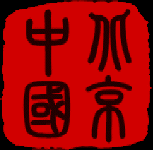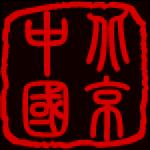 |
Chinese Culture Chinese Architecture |
 |
 |
Chinese Culture Chinese Architecture |
 |
Chinese ArchitectureChinese architectural had a major influence on the architectural styles of Japan, Korea and Vietnam. Traditional Chinese architecture stressed the visual impact of buildings, and emphasised width rather than height, and symmetry. Grandeur could be signified by the number of tiers - in terms of floors or roofs. Buildings would normally be based on a substantial platform, side walls and a curved overhanging roof. Palaces, temples and even hutongs (alleys of simple commoners dwellings) were usually surrounded by a gated wall. Imperial ArchitectureWhile the dwellings of ordinary people, such as hutongs, were generally grey in color, both walls and roof, imperial buildings employed color. Imperial buildings had golden yellow roof tiles, red columns and doors, and walls that are shades of red - pink, purple or terracotta. Religious ArchitectureBuddhist architecture in much of China follows the imperial style, but with green roof tiles. A Buddhist temple normally has a front hall that houses a statue of a Bodhisattva, followed by a great hall that houses statues of the Buddhas, with accommodation for the monks and nuns at either side. Taoist architecture is a little less grand. The main deity is usually represented in the main hall which is at the front, in contrast to Buddhist layout where the main hall will be to the rear. Also, the entrance is usually at or to the side which is believed to confuse entry by demons (a Feng Shui guideline). Taoist roofs are generally blue. Commoners ArchitectureA SiHeYuan, or courtyard, was the traditional unit and could range from small and basic to elaborate. The courtyard itself, even if very small, could contain potted plants and serve as a small garden as well as workspace. A SiHeYuan would face south with the entrance at the front but on the east side. The main building would be at the back facing the courtyard (that is, facing south). Children would live in the side rooms. The room beside the entrance was used for sundry purposes. The main building faces south to avoid northerly winds and gain the most possible sunshine during winter. Overhanging eaves keep the building cool when the summer sun is high in the sky, and also keep off rain. The main building is divided into three, or sometimes five, rooms, with the main living area in the center. There is often a screen just inside the entrance so that passers by cannot see directly into the courtyard - and to protect from evil spirits (who are said to travel in straight lines and deterred by curved paths and screens). Wealthy people would have a larger SiHeYuan, possibly with two or even more courtyards, one behind the other. A pair of stone lions would be placed outside the main gate, which would be painted red with a large copper or brass ring handle. SiHeYuans were constructed next to each other in rows to form a hutong - an alley less than 9m wide (the narrowest are less than 1m wide). These lively communities are disappearing fast in Beijing, and elsewhere, although some such areas are now protected from redevelopment. |
Share this page
|
China Travel and Culture Videos Home